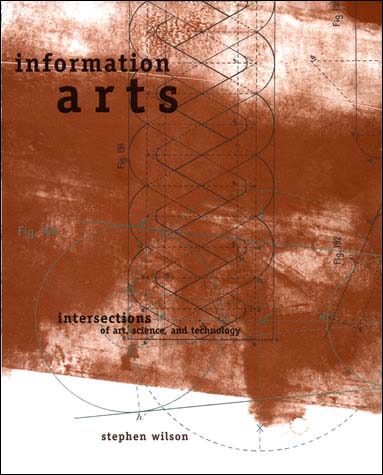John Mullarkey: Post-Continental Philosophy: An Outline (2006)
Filed under book | Tags: · affect, biology, empiricism, immanence, mathematics, monism, non-philosophy, ontology, phenomenology, philosophy, science, set theory, theory

Post-Continental Philosophy outlines the shift in Continental thought over the last 20 years through the work of four central figures: Gilles Deleuze, Alain Badiou, Michel Henry, and François Laruelle. Though they follow seemingly different methodologies and agendas, each insists on the need for a return to the category of immanence if philosophy is to have any future at all. Rejecting both the German phenomenological tradition of transcendence (of the Ego, Being, Consciousness, Alterity, or Flesh), as well as the French Structuralist valorisation of Language, they instead take the immanent categories of biology (Deleuze), mathematics (Badiou), affectivity (Henry), and axiomatic science (Laruelle) as focal points for a renewal of thought. Consequently, Continental philosophy is taken in a new direction that engages science and nature with a refreshingly critical and non-reductive approach to life, set-theory, embodiment, and knowledge. However, each of these new philosophies of immanence still regards what the other is doing as transcendent representation, raising the question of what this return to immanence really means. John Mullarkey’s analysis provides a startling answer. By teasing out their internal differences, he discovers that the only thing that can be said of immanence without falling back into transcendent representation seems not to be a saying at all but a ‘showing’, a depiction through lines. Because each of these philosophies also places a special value on the diagram, the common ground of immanence is that occupied by the philosophical diagram rather than the word. The heavily illustrated final chapter of the book literally outlines how a mode of philosophical discourse might proceed when using diagrams to think immanence.
Publisher Continuum International Publishing Group, 2006
Transversals: New Directions in Philosophy series
ISBN 0826464610, 9780826464613
260 pages
PDF (updated on 2012-9-6)
Comments (2)Thomas S. Kuhn: The Structure of Scientific Revolutions (1962–) [EN, IT, ES, BR-PT, RU, GR, CZ, CR, CN, RO]
Filed under book | Tags: · history, history of science, non-linear history, philosophy of science, science, sociology of knowledge, theory

“The Structure of Scientific Revolutions is an analysis of the history of science. Its publication was a landmark event in the sociology of knowledge, and popularized the terms paradigm and paradigm shift.
Kuhn’s approach to the history and philosophy of science has been described as focusing on conceptual issues: what sorts of ideas were thinkable at a particular time? What sorts of intellectual options and strategies were available to people during a given period? What types of lexicons and terminology were known and employed during certain epochs? Stressing the importance of not attributing modern modes of thought to historical actors, Kuhn’s book argues that the evolution of scientific theory does not emerge from the straightforward accumulation of facts, but rather from a set of changing intellectual circumstances and possibilities. Such an approach is largely commensurate with the general historical school of non-linear history.”
Publisher University of Chicago Press, 1962
Third edition, 1996
ISBN 0226458083, 9780226458083
212 pages
The Structure of Scientific Revolutions (English, 3rd ed., 1962/1996; updated on 2015-7-10)
La struttura delle rivoluzioni scientifiche (Italian, trans. Adriano Carugo, 2nd ed., 1969, DJVU)
La estructura de las revoluciones cientificas (Spanish, trans. Agustin Contin, 1971/2004)
A estrutura das revoluções científicas (Brazilian Portuguese, trans. Beatriz Vianna Boeira and Nelson Boeira, 5th ed., 1975/1998)
Struktura nauchnykh revolutsiy (Russian, trans. I.Z. Naletov, 1975/2003, DJVU)
Η δομή των επιστημονικών επαναστάσεων (Greek, trans. Β. Κάλφας, 1997)
Struktura vědeckých revolucí (Czech, trans. Tomáš Jeníček, 1997)
Struktura znastvenih revolucija (Croatian, trans. Mirna Zelić, 2nd ed., 2002)
科学革命的结构 (Chinese, 2003)
Structura revoluțiilor științifice (Romanian, trans. Radu J. Bogdan, 2008)
Stephen Wilson: Information Arts: Intersections of Art, Science, and Technology (2002)
Filed under book | Tags: · art, art and science, artificial intelligence, artistic research, bio art, biology, ecology, electronic art, genetics, interactive media, media art, nanotechnology, new media, physics, robots, science, sound art, technology, telepresence, theory

“A new breed of contemporary artist engages science and technology—not just to adopt the vocabulary and gizmos, but to explore and comment on the content, agendas, and possibilities. Indeed, proposes Stephen Wilson, the role of the artist is not only to interpret and to spread scientific knowledge, but to be an active partner in determining the direction of research. Years ago, C. P. Snow wrote about the “two cultures” of science and the humanities; these developments may finally help to change the outlook of those who view science and technology as separate from the general culture.
In this rich compendium, Wilson offers the first comprehensive survey of international artists who incorporate concepts and research from mathematics, the physical sciences, biology, kinetics, telecommunications, and experimental digital systems such as artificial intelligence and ubiquitous computing. In addition to visual documentation and statements by the artists, Wilson examines relevant art-theoretical writings and explores emerging scientific and technological research likely to be culturally significant in the future. He also provides lists of resources including organizations, publications, conferences, museums, research centers, and Web sites.”
Published by MIT Press, 2002
ISBN 026223209X, 9780262232098
969 pages
PDF (updated on 2012-10-23)
Comment (0)
